WANKEL technology and motorcycles
- Luís Cardoso
- Jun 30, 2022
- 6 min read
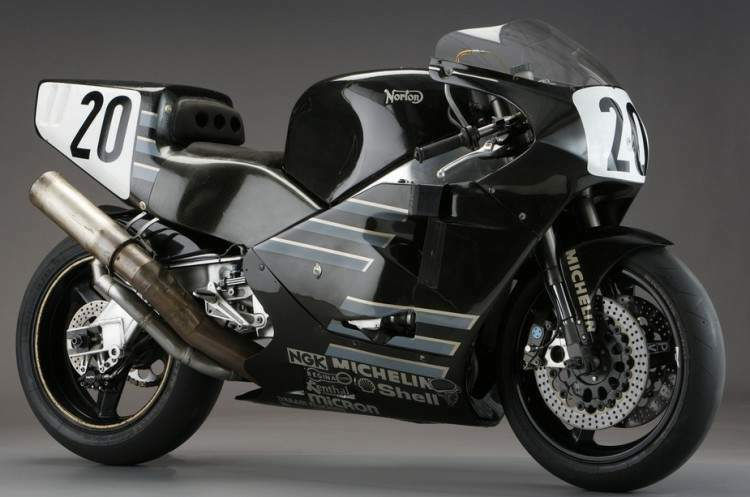
NORTON NRS 588
The WANKEL engine
The WANKEL engine is an internal combustion engine that uses one or more triangular-shaped rotors instead of the pistons used in conventional reciprocating engines, 2T or 4T. Unlike cylinder and piston engines that produce a reciprocating motion using the connecting rod/crank principle, the WANKEL rotary engine has a smoother operation, with less friction, less vibration and quieter. Felix Wankel (1902-1988) was the creator of the rotary engine that is now named after him. He was self-taught, the lack of academic training did not prevent him from being a designer of great value from a very young age. In the 1930s he was arrested by the Nazis, anyway after being released he still collaborated, during World War II, in the development of sealing systems and rotary valves for Luftwaffe planes, the German air force, and torpedoes for the Kriegsmarine, German navy. In 1924 he conceived the rotary engine, his project was based on a structure of epicyclic movements of a rotor on an axis. A tri-lobular rotor, a triangle with domed faces, rotating inside an oval-shaped hollow casing. In his workshop in Heidelberg, with meticulousness and perseverance, Felix managed to overcome the first notable defect of his creation: durability. In 1929 he issued two patent treaties: the first, on October 16, 1929, deals with the "compensation or balance of masses for gears, with masses moving in different directions"; in the second, of December 6, 1929, it proposes new load adjustments of the piston rings. It obtained its first charter for the rotary engine on June 20, 1933. In the rotary engine there are no masses that move in different directions. Its biggest drawback is the sealing between the rotor lobes. Wankel then obtains another patent, relating to special waterproofing for rotary distributors. He moves to the city of Lahr, where he obtains funds to rent an empty factory in Lindam. With just over 100 men working at the Techinische Entwicklungs Stelle, Technical Development Department, perfects the sealing system, until then the most vulnerable point of the project, to start series production. At the end of the war, everything is confiscated by the Americans and the French. Then he gets a contract with NSU to build a motorcycle engine on the rotary-piston principle.
On August 9, 1956, the "flying rocking chair", an aerodynamic motorcycle, conquered several world records in the 50 and 75 cm³ classes.
NSU record racer
ADV
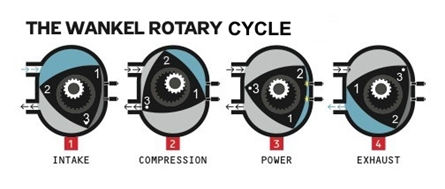
This engine essentially consists of a chamber whose internal design approximates the shape of an eight. Inside it, a roughly triangular-shaped rotor rotates eccentrically with respect to the main shaft, which is equivalent to the crankshaft of reciprocating engines. The shapes of these two elements are such that while the rotor corners are always equidistant from the chamber walls - and very close to them, forming a seal - they successively increase and decrease the space between the convex sides of the triangle, the rotor, and the chamber walls. Thus, if a mixture is injected into one of the chambers, when it is increasing in size, it will be compressed in the subsequent reduction in volume, while the rotor rotates. In this way, the classic four-stroke cycle: intake, compression, explosion and exhaust - is produced and, furthermore, the three rotor faces are in three different phases of the cycle at the same time. In a 4T engine, there is an explosion for every 2 revolutions, in a 2T engine, there is an explosion for each revolution and in a WANKEL engine, there are 3 explosions for each revolution!!!
The advantages
The Wankel engine has many advantages over conventional piston engines. Firstly, there are no vibrations due to the fact that there is only one rotary motion, this means even less wear and tear and longer life. The Wankel engine is not complicated at all, on the contrary, it has few components and is much smaller. In addition, it generates more power and more torque than a "conventional" engine of the same displacement. This is because each side of its rotor is in a phase of the cycle, generating more explosions, around the shaft, than a piston engine. Due to its working principle, in which there are no sudden changes in components, changes in the direction of movement of the pistons, the vibrations produced by the engine are much smaller, as is the noise level. Another important aspect is the binary, which is made available in a more homogeneous and constant way. As if that were not enough, they are much more compact and lighter, allowing for better "storage", lower center of gravity, smaller frontal surface and, therefore, the possibility of a better coefficient of aerodynamic penetration. The disadvantages Disadvantages include a tendentially sharp power curve and problems in maintaining an ideal seal between the rotor corners and the combustion chamber walls due to thermal expansion, which causes some difficulties due to the rigor of the project specifications and to the minimum tolerances in production. In addition, the Wankel engine heats up much more than the piston engine, due to the high rpm it reaches, working, so to speak, always at the "limit". Another disadvantage would be a high rate of emission of polluting gases.
Evolution and the QUASITURBINE engine The development difficulties greatly conditioned the generalization of the use of this engine. However, today, with the greater ease of achieving greater construction rigor, with the specialization that fuel injection methods have undergone alongside pollutant gas emission control systems, it is not at all impossible that this technology will have a new impulse. In 1996, the Quasiturbine engine was patented, an evolution of the Wankel engine. It was developed by a team formed by the Canadian Saint-Hilaire family, headed by physicist Dr. Gilles Saint-Hilaire. In the Quasiturbine, several of the disadvantages of the Wankel engine have been eliminated.

ADV
The main motorcycles with WANKEL engine HERCULES / DKW Between 1974 and 1977 HERCULES produced a limited number of motorcycles equipped with WANKEL engines. This engine was later used by NORTON to produce the Commander model in the early 1980s.
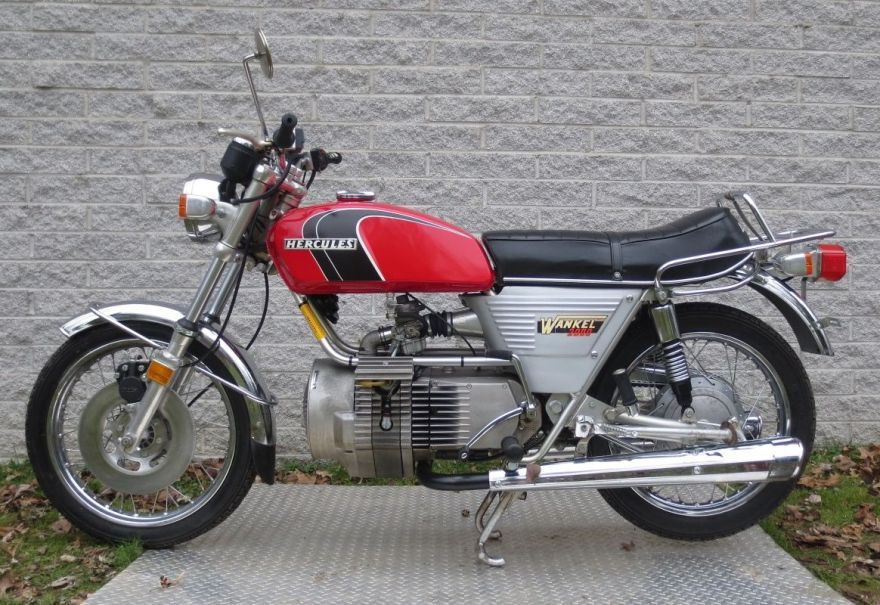
HERCULES / DKW W-2000
HERCULES 502 GS - Stefano Passeri test at ITDE 2016 (isola d'Elba revival)
KAWASAKI
Just as a prototype, KAWASAKI produced a dual-rotor model, the X99 was in fact considered for production, not least because the company bought production rights for WANKEL engines. It appeared in 1972, supposedly had 900cc and 85hp, however, it disappeared without a trace.
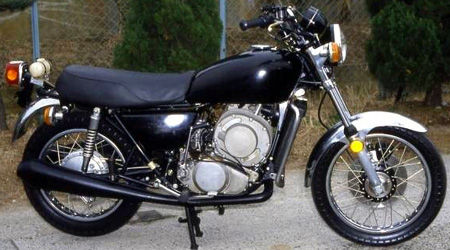
KAWASAKI X99 RCE
NORTON
NORTON is the brand that in recent years has invested in this concept, including in competition, where they reached a good stage of development, conditioned however, due to limited participation due to the lack of regulatory adaptation, they ran practically only in the United Kingdom and in classes in disuse. like TTF1. In the 1990 edition of Vila Real, Robert Dunlop was second in the F1 race aboard a NORTON RCW 588.

Robert Dunlop
Several were the riders who used the NORTON WANKEL in competition: Steve Hislop, Robert Dunlop, Terry Rymer, Trevor Nation, etc...
NORTON ROTON 500 GP

NORTON Interpol II
NORTON spent much of the 1970s playing with prototype WANKEL-powered motorcycles. It was not until 1984 that the first production version of Interpol II was created. However, it was only for sale to the police!. Of course, now, at every step they appear in the hands of privates!!! In fact they were bikes that were between prototype and production status! If the fairing looks familiar it's because it was copied from the BMW R100RT which was, at the time, the favorite motorcycle of the police!
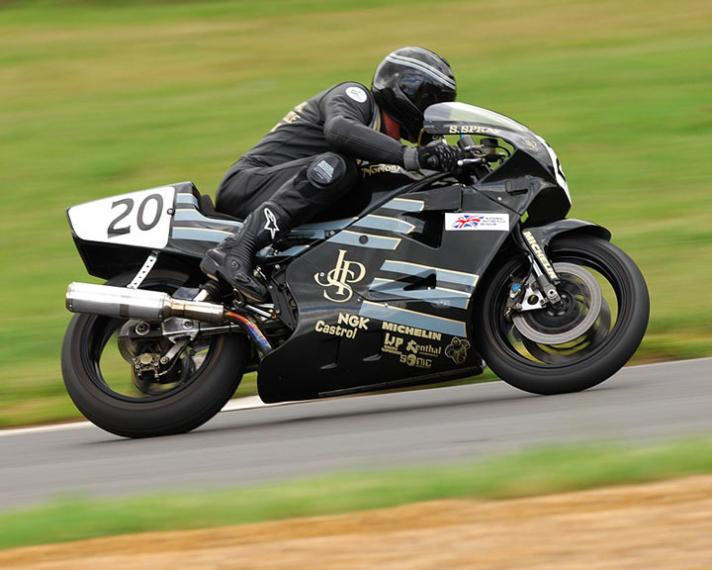
NORTON NRS 588, Steve Spray
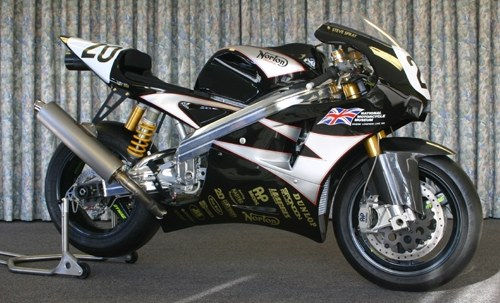
NORTON NRV 700, 2007
NORTON started in 2007 production of a 700cc version called the NRV700.

NORTON Commander
SUZUKI
The SUZUKI RE-5 was a WANKEL-powered motorcycle produced in 1974 and 1976. Heralded as the future of motorcycling, the small-displacement engine produced impressive power. However, other problems and the lack of interchangeable parts resulted in low sales. About 7,000 units were produced.
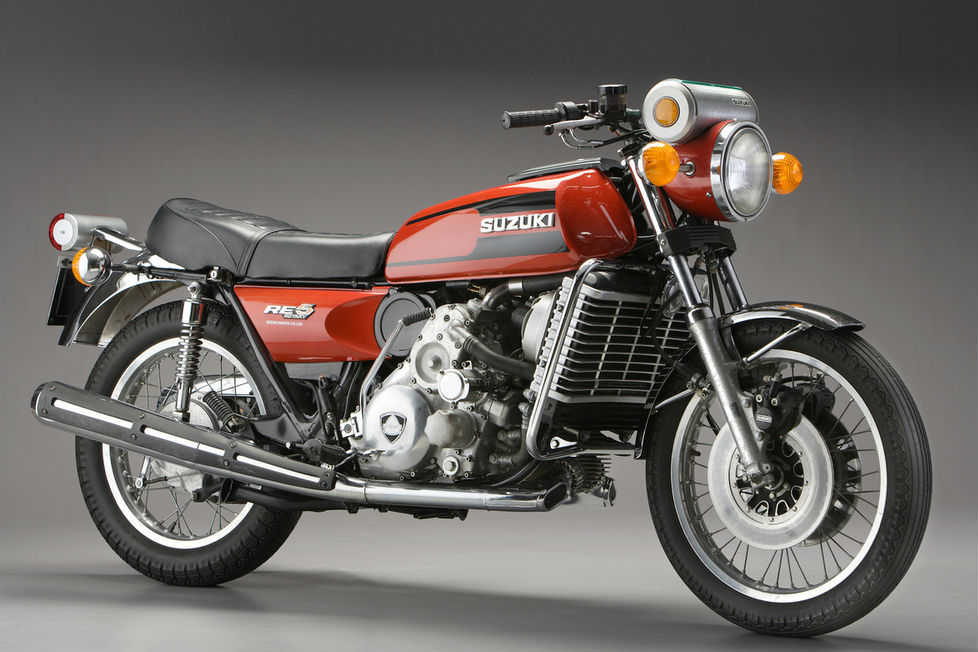
SUZUKI RE-5
VAN VEEN
In the early 70's, Henk van Veen started the project of a large capacity motorcycle to be sold for use on the road. The OCR 1000 was equipped with a Wankel engine, exhibited an impeccable build quality and top-notch performance, claimed a maximum power of 100 hp at a time when the benchmark was set at 82 hp of the KAWASAKI 900 Z1. Problems with the development of the chassis, with the consumption of the engine (12.5 l/100 km of fuel and 1 l/800 km of oil) and finally the closure of the factory to which the production of the engines was sub-contracted, lead to that production ended almost before it started (in 1979). In total, 34 units were produced, today they have great collection value, some delivered to well-known end customers, such as Gunther Sachs and Malcolm Forbes.
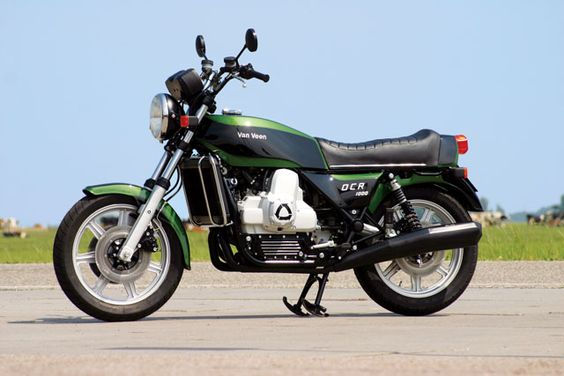
VAN VEEN OCR 1000
YAMAHA
YAMAHA has never produced a series motorcycle with a WANKEL engine, but it was almost there. Unveiled at the 1972 Tokyo Motor Show, the RZ201 had a 660cc WANKEL engine that produced 66hp. Only a few prototypes were produced and the design is very similar to the TX750, same frame and same suspensions.

YAMAHA RZ201 CCR

























Comments